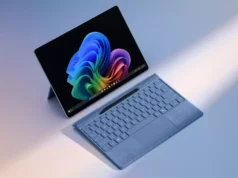Just a week since its release, Apple’s iOS 8.4 has already been adopted by 40 percent of all active iOS users. While the update was mostly about maintenance and bug fixes, it also introduced the much-hyped Apple Music streaming service that is available on all devices from iPhone 4S and onwards.
The iOS 8.4 is quite a significant update for users, largely because it brings the newly launched Apple Music and also features the revamped Music app that is one of the popular apps on iOS devices. In addition, it also features free-to-use radio stations including Beats 1, along with a music-oriented social service called Connect.
Mixpanel, an analytics research firm has posted a real-time chart of the iOS 8.4 adoption rate. They duly note that the rapid adoption rate of iOS 8.4 may be “dangerous for Spotify,” as hundreds of millions of people who can get a free three-month trial with Apple Music. Both Apple and Spotify are now available in 100 countries, though the Cupertino giant has a slight edge on its rival in terms of the sheer number of songs available, reportedly over 40 million compared to Spotify’s 30 million.
However, the new update has led Apple to trash the free ‘Home Sharing’ feature which was rather popular among iOS users. Users have long enjoyed this feature for free, though now the company has subtly updated its Home Sharing support page saying that the feature will no longer be available for free.
Meanwhile, Google has also revealed its month chart that shows the adoption rate of various versions of Android. According to the Mountain View giant, its Android Lollipop – both v5.0 and v5.1 – is now running on more than 12.4 percent of Android devices, which has increased by 2.7 percent since May. This rise can be largely attributed to the adoption of new flagships including the Galaxy S6 and Galaxy S6 Edge, HTC One M9, along with new devices from Sony.
FYI, KitKat still rules the roost with a 39.2 percent share, while Jelly Bean comes next at 37.4 percent. Surprisingly, the report says that Android 2.2 Froyo, which is apparently almost five years old now, is still used in 0.3 percent of Android devices.










